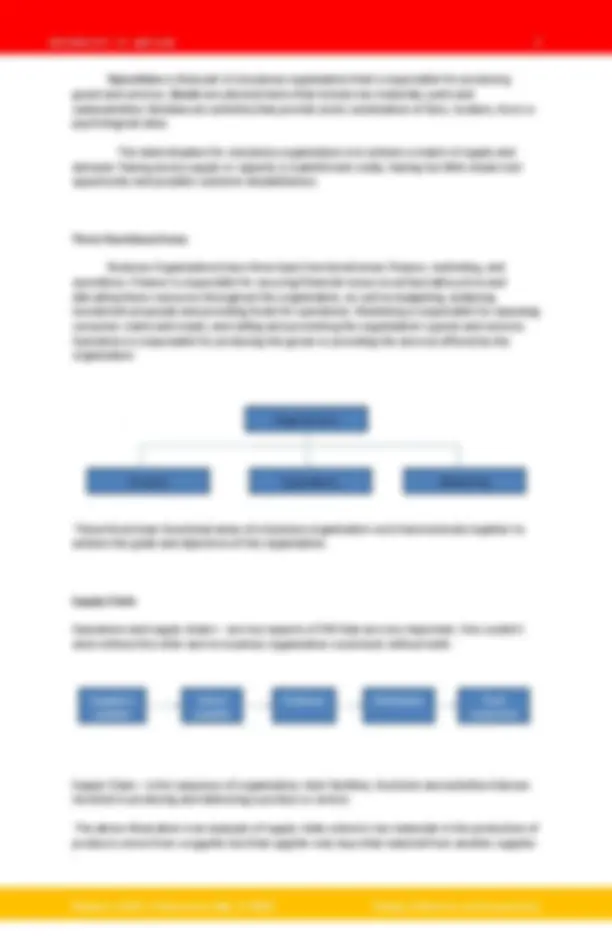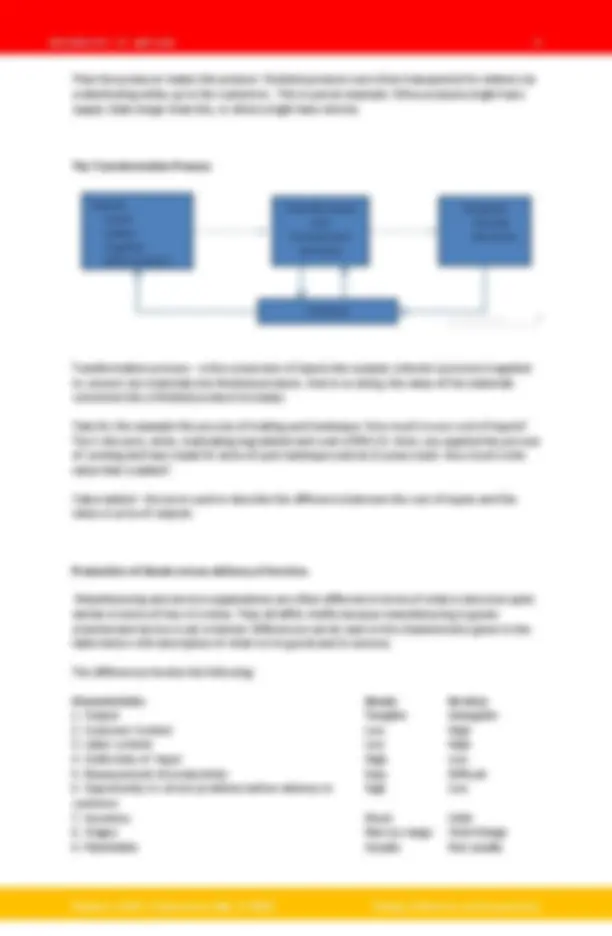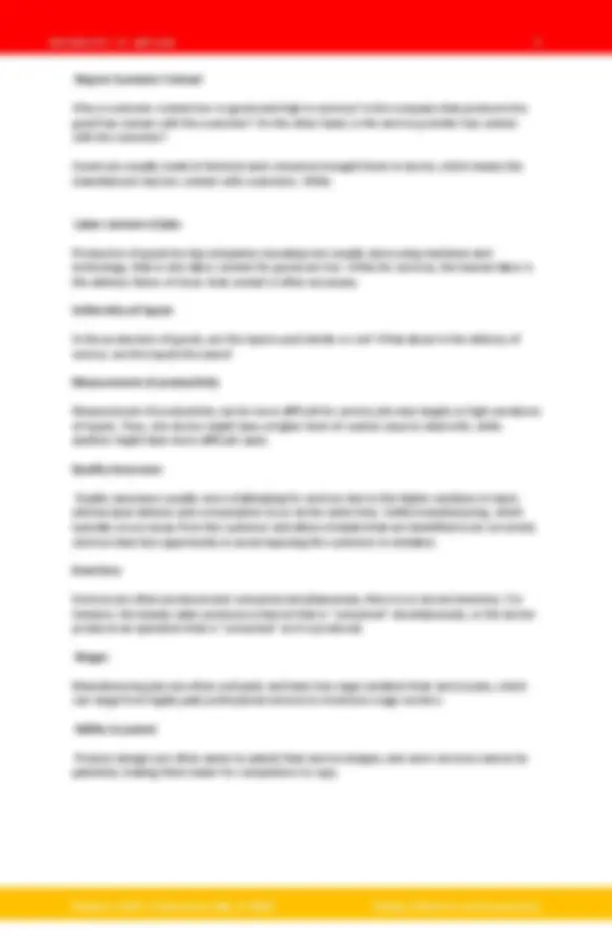






Study with the several resources on Docsity

Earn points by helping other students or get them with a premium plan


Prepare for your exams
Study with the several resources on Docsity

Earn points to download
Earn points by helping other students or get them with a premium plan
Community
Ask the community for help and clear up your study doubts
Discover the best universities in your country according to Docsity users
Free resources
Download our free guides on studying techniques, anxiety management strategies, and thesis advice from Docsity tutors
Operations Management explores the way organizations produce and distribute goods and services. Everything that we wear, eat, sit on, use or read comes to us courtesy of the operations managers who organized its production and distribution. Goods such as automobiles, airplanes, computers and houses, must be produced, as do the services provided by hospitals, ski resorts, and banks. This explanation reflects the essential nature of operations management: it is the central activity in organi
Typology: Study Guides, Projects, Research
1 / 8

This page cannot be seen from the preview
Don't miss anything!





Then the producer makes the product. Finished products were then transported for delivery by a distributing entity up to the customers. This is just an example. Other products might have supply chain longer than this, or others might have shorter. The Transformation Process Transformation process – is the conversion of inputs into outputs wherein a process is applied to convert raw materials into finished products. And in so doing, the value of the materials converted into a finished product increases. Take for the example the process of making pork barbeque. How much is your cost of inputs? The 1 kilo pork, sticks, marinating ingredients and coal is P300.00. then, you applied the process of cooking and have made 50 sticks of pork barbeque sold at 10 pesos each. How much is the value that is added? Value-added – the term used to describe the difference between the cost of inputs and the value or price of outputs Production of Goods versus delivery of Services Manufacturing and service organizations are often different in terms of what is done but quite similar in terms of how it is done. They all differ chiefly because manufacturing is goods oriented and service is act-oriented. Differences can be seen in the characteristics given in the table below with description of what is it in goods and in services. The differences involve the following: Characteristics Goods Services
Degree Customer Contact Why is customer contact low in goods and high in services? Is the company that produces the good has contact with the customer? On the other hand, is the service provider has contact with the customer? Goods are usually made in factories and consumers bought them in stores, which means the manufacturer has low contact with customers. While Labor content of jobs Production of goods by big companies nowadays are usually done using machines and technology, that is why labor content for goods are low. While for services, the human labor is the delivery factor of most, that contact is often necessary. Uniformity of inputs In the production of goods, are the inputs used similar or not? What about in the delivery of service, are the inputs the same? Measurement of productivity Measurement of productivity can be more difficult for service jobs due largely to high variations of inputs, Thus, one doctor might have a higher level of routine cases to deal with, while another might have more difficult cases. Quality Assurance Quality assurance usually more challenging for services due to the higher variation in input, and because delivery and consumption occur at the same time. Unlike manufacturing, which typically occurs away from the customer and allows mistake that are identified to be corrected, services have less opportunity to avoid exposing the customer to mistakes. Inventory Services are often produced and consumed simultaneously; there is no stored inventory. For instance, the beauty salon produces a haircut that is "consumed" simultaneously, or the doctor produces an operation that is "consumed" as it is produced. Wages Manufacturing jobs are often well paid, and have less wage variation than service jobs, which can range from highly paid professional services to minimum-wage workers. Ability to patent Product designs are often easier to patent than service designs, and some services cannot be patented, making them easier for competitors to copy.
Process Variation Achievement of a match between process output and demand is difficult due to process variation and demand variability. There are four basic sources of variation and these are:
Scheduling of planes for flights and for routine maintenance; scheduling of pilots and flight attendants; and scheduling of ground crews, counter staff, and baggage handlers; Managing inventories of such items as foods and beverages, first aid equipment, inflight magazines, pillows and blankets, and life preservers. Assuring quality is essential in flying and maintenance operations, where emphasis is on safety, and important in dealing with customers, where the main focus is efficiency and courtesy. Motivating and training employees in all phases of operations.